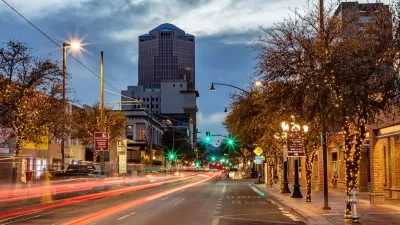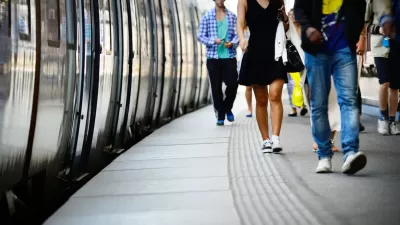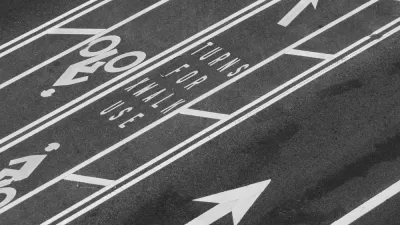The patterns of urban development over the past few decades have pushed more and more people into cars by necessity. But as design priorities change, so are people's walking and driving habits.
This piece from Sierra looks at how urban form is ushering changes in the way people move about cities, and other influences for getting people out of their cars.
"All that extra driving--people using a gallon of gas to get a gallon of milk--has turned us into high-octane petro-vores. Between 1960 and '70, the U.S. population grew by 13 percent while gasoline demand rose by 54 percent; the next decade, with the same population growth, gas demand increased by 17 percent.
The shift to sprawling development patterns and the turning away from once-common practices like walking to school are often defended as a matter of "choice"--one, of course, fueled by decades of government laws and incentives. The irony is that many communities today have no choice when it comes to transportation: We have created a vehicular monoculture. But there are signs that this is changing. First, we seem to be maxing out on just how much driving we're willing to do."
FULL STORY: Living Large Driving Less

Alabama: Trump Terminates Settlements for Black Communities Harmed By Raw Sewage
Trump deemed the landmark civil rights agreement “illegal DEI and environmental justice policy.”

Planetizen Federal Action Tracker
A weekly monitor of how Trump’s orders and actions are impacting planners and planning in America.

The 120 Year Old Tiny Home Villages That Sheltered San Francisco’s Earthquake Refugees
More than a century ago, San Francisco mobilized to house thousands of residents displaced by the 1906 earthquake. Could their strategy offer a model for the present?

Ken Jennings Launches Transit Web Series
The Jeopardy champ wants you to ride public transit.

BLM To Rescind Public Lands Rule
The change will downgrade conservation, once again putting federal land at risk for mining and other extractive uses.

Indy Neighborhood Group Builds Temporary Multi-Use Path
Community members, aided in part by funding from the city, repurposed a vehicle lane to create a protected bike and pedestrian path for the summer season.
Urban Design for Planners 1: Software Tools
This six-course series explores essential urban design concepts using open source software and equips planners with the tools they need to participate fully in the urban design process.
Planning for Universal Design
Learn the tools for implementing Universal Design in planning regulations.
Clanton & Associates, Inc.
Jessamine County Fiscal Court
Institute for Housing and Urban Development Studies (IHS)
City of Grandview
Harvard GSD Executive Education
Toledo-Lucas County Plan Commissions
Salt Lake City
NYU Wagner Graduate School of Public Service





























